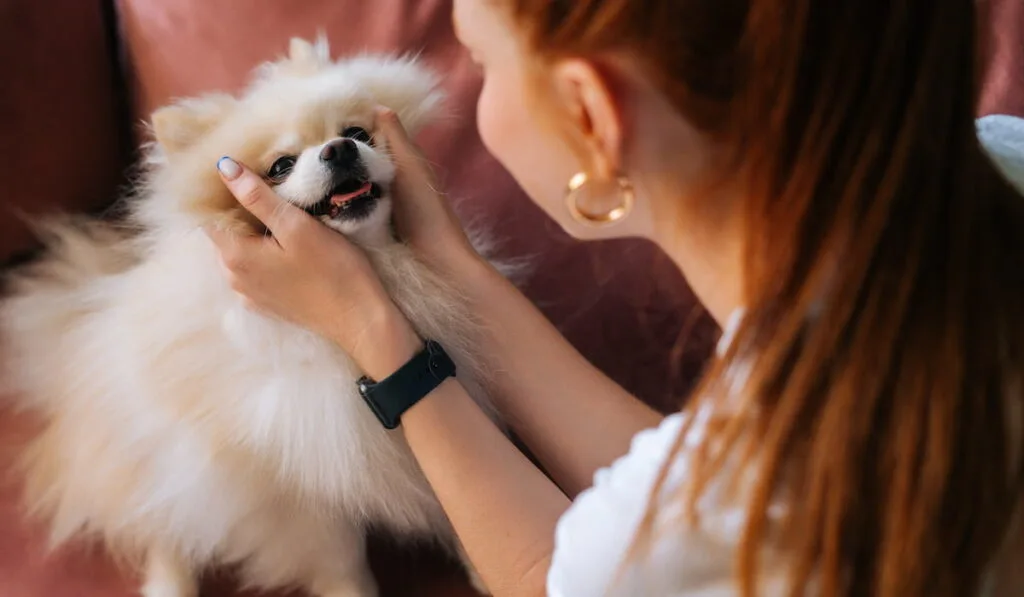If you’re a dog lover, you’re probably up close and personal with your furry friend all the time.
Dog owners love to cuddle, play, wrestle, and pet their dogs.
One thing you may have noticed in the past is that your dog’s ears vary in temperature.
They can be cold or hot to the touch, which may get you a bit worried, or, at the very least, perplexed about why it’s happening.
If you’re wondering, “Why are my dog’s ears cold?”, we’re here to help.
Your dog’s ears can get cold for a variety of reasons like outdoor exposure, circulation concerns, or they could be feeling under the weather.
Some dog breeds are more prone to cold ears than others because of the size of their ears and how they are exposed to winds and cold air.

If your dog has a short coat or is outside playing all of the time, then they are more likely to have colder ears.
Is it bad?
Well, it could be, depending on the situation.
We want to make sure our dogs are healthy and happy, so let’s learn a bit about why dog ears get cold and what you can do about it.
Table of Contents
Get Help If There Is Serious Concern
Anytime you’re worried about your dog’s health, you can always contact a vet for professional assistance.
If the condition is lingering and you feel like it’s making your dog uncomfortable, call your vet and schedule an appointment.
Take them in for a quick checkup and get the peace of mind you need knowing your dog is in good hands.
Most of the time, if your dog has cold ears, it’s not a cause for serious concern, especially if they aren’t showing any other adverse symptoms.
If your dog’s ears are cold but they are acting themselves otherwise, then it’s probably not a big deal.
Your Dog Can Catch a Cold

Your dog can catch a cold just like you can, and one of the symptoms could be cool ears.
If your dog is sick, they should be exhibiting other symptoms like sneezing or a runny nose. Sometimes, dogs with a cold run a fever, so their ears may be hotter than normal.
If you’re worried, just make checking on your dog’s ear temperature part of your routine of monitoring their overall health.
Most of the time, a cold is not a huge deal to your dog. They’ll deal with it and get through it in much the same way humans do.
However, if the symptoms persist take them to the vet for a checkup.
Is Your Dog Outside A Lot?
Dog ears get cold quickly if they are outside when temperatures are low.
If it’s windy where you live, it can also make them chilly. Dogs with exposed ears or dogs who have their ears perked up and stand at attention all of the time will also get colder.
If your dog has been outside recently and has cold ears, it’s no surprise. If, however, their ears stay particularly cold for hours, then monitor them more closely for a while.
Your Dog Could Have a Circulation Problem
In a small minority of dogs with cold ears, it could point to greater health concerns like a circulation problem. As a dog owner, you’ll want to help your dog keep their body temperature regulated.
If a certain part of their body, including their ears, is especially cold, then take a closer look.
This is much more of an issue in older dogs or dogs with other health problems.
Here are some other symptoms to monitor if you’re worried about their circulation:
- Shivering
- Low energy
- Red areas between your dog’s toes
- Cold paws
- Cold nose
If you notice any of these symptoms together that last for more than a few days, then you should talk to a vet about your concerns.
Different Dogs Handle the Cold Differently
It’s important to note that not all dogs handle the cold the same.

Dogs with short coats, smaller dogs, and dogs who are naturally accustomed to colder temperatures will do just fine if their ears get cold.
However, if you’ve got a small dog who is typically in a tropical climate and you take them on a ski trip, then you’ll want to keep a close eye on them to make sure they stay warm enough.
What about for a puppy?
Puppies are usually small and haven’t had time to develop their full coat just yet.
That leaves them with little to protect their ears against the cold.
If your puppy has perky ears and is always on the hunt for squirrels in your yard, then their ears are going to get cold faster.
Here’s What You Can Do to Keep Your Dog’s Ears Warm
What should you do if your dog’s ear and nose are cold? Dogs get cold just like you do.
If you’re outside on a walk or playing in the yard and your ears start to sting from the cold a bit, there’s a good chance your dog is feeling the same.
Typically, your dog will warm up after a few minutes inside but observe them to make sure they are acting normally.
If they’re shivering, whining, or react poorly if you pet their head or try to touch their ears, then you’ll want to cover them up with a blanket, turn the heat up a bit, or sit next to them until they warm up.
Watch their body language and react as quickly as you can. Give them some extra bedding and limit their outdoor time until their mood or behavior improves.

The bottom line is that dog’s cold ears are usually nothing to worry about.
It’s part of getting outside and running around in the winter or when it’s windy outside.
With a bit of warmth in a blanket or keeping a coat on them to regulate their body temperature, they will be back to normal in no time.
As always, if you’re ever worried, talk to your vet and hear what they have to say.
